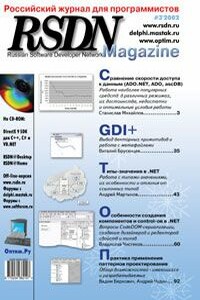Парное программирование: преимущества и недостатки | страница 16
люди учатся совместной работе и общению, что приводит к увеличению потока информации внутри команды и положительно влияет на ее динамику;
люди испытывают больше удовольствия от своей работы.
При этом увеличение стоимости разработки при парном программировании составляет вовсе не 100%, как можно было бы ожидать, а приблизительно 15%, что легко окупается за счет более высокого качества программного кода (а значит, меньших затрат на тестирование и поддержку).
Литература
1. Salomon, G., Distributed Cognitions: Psychological and educational considerations. Learning in doing: Social, cognitive, and computational perspectives, ed. R. Pea and J.S. Brown. 1993, Cambridge: Cambridge University Press.
2. Constantine, L.L., Constantine on Peopleware. Yourdon Press Computing Series, ed. E. Yourdon. 1995, Englewood Cliffs, NJ: Yourdon Press.
3. Beck, K., Extreme Programming Explained: Embrace Change. 2000, Reading, Massachusetts: Addison-Wesley.
4. Williams, L., et al., Strengthening the Case for Pair-Programming, in IEEE Software. submitted to IEEE Software. Online at www.cs.edu/~lwilliam/Papers/ieeeSoftware.PDF
5. Williams, L.A. and R.R. Kessler. The Collaborative Software Process. in International Conference on Software Engineering 2000. submitted for consideration. Limerick, Ireland. Online at www.cs.edu/~lwilliam/Papers/ICSE.pdf
6. Nosek, J.T., The Case for Collaborative Programming, in Communications of the ACM. 1998. p. 105-108.
7. Humphrey, W.S., A Discipline for Software Engineering. SEI Series in Software Engineering, ed. P. Freeman, Musa, John. 1995: Addison Wesley Longman, Inc.
8. Humphrey, W.S., Introduction to the Personal Software Process. 1997: Addison-Wesley.
9. Flor, N.V. and E.L. Hutchins. Analyzing Distributed Cognition in Software Teams: A Case Study of Team Programming During Perfective Software Maintenance. in Empirical Studies of Programmers: Fourth Workshop. 1991: Ablex Publishing Corporation.
10. Fagan, M.E., Advances in software inspections to reduce errors in program development. IBM Systems Journal, 1976. 15: p. 182-211.
11. Johnson, P.M., Reengineering Inspection: The Future of Formal Technical Review, in Communications of the ACM. 1998. p. 49-52.
12. Lave, J. and E. Wenger, Situated Learning: Legitimate peripheral participation. 1991, New York, NY: Cambridge University Press.
13. Weinberg, G.M., The Psychology of Computer Programming Silver Anniversary Edition. 1998, New York: Dorset House Publishing.


